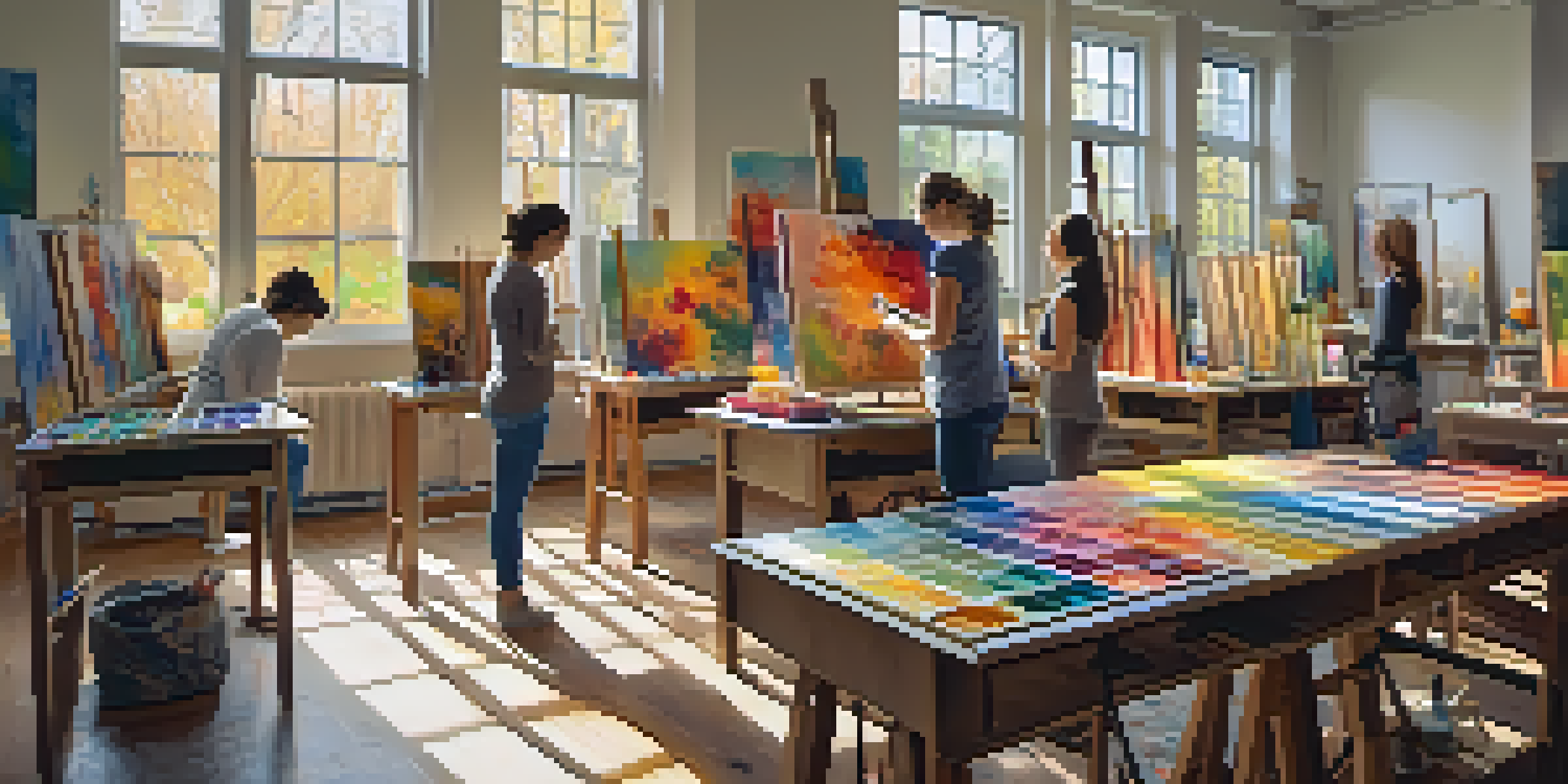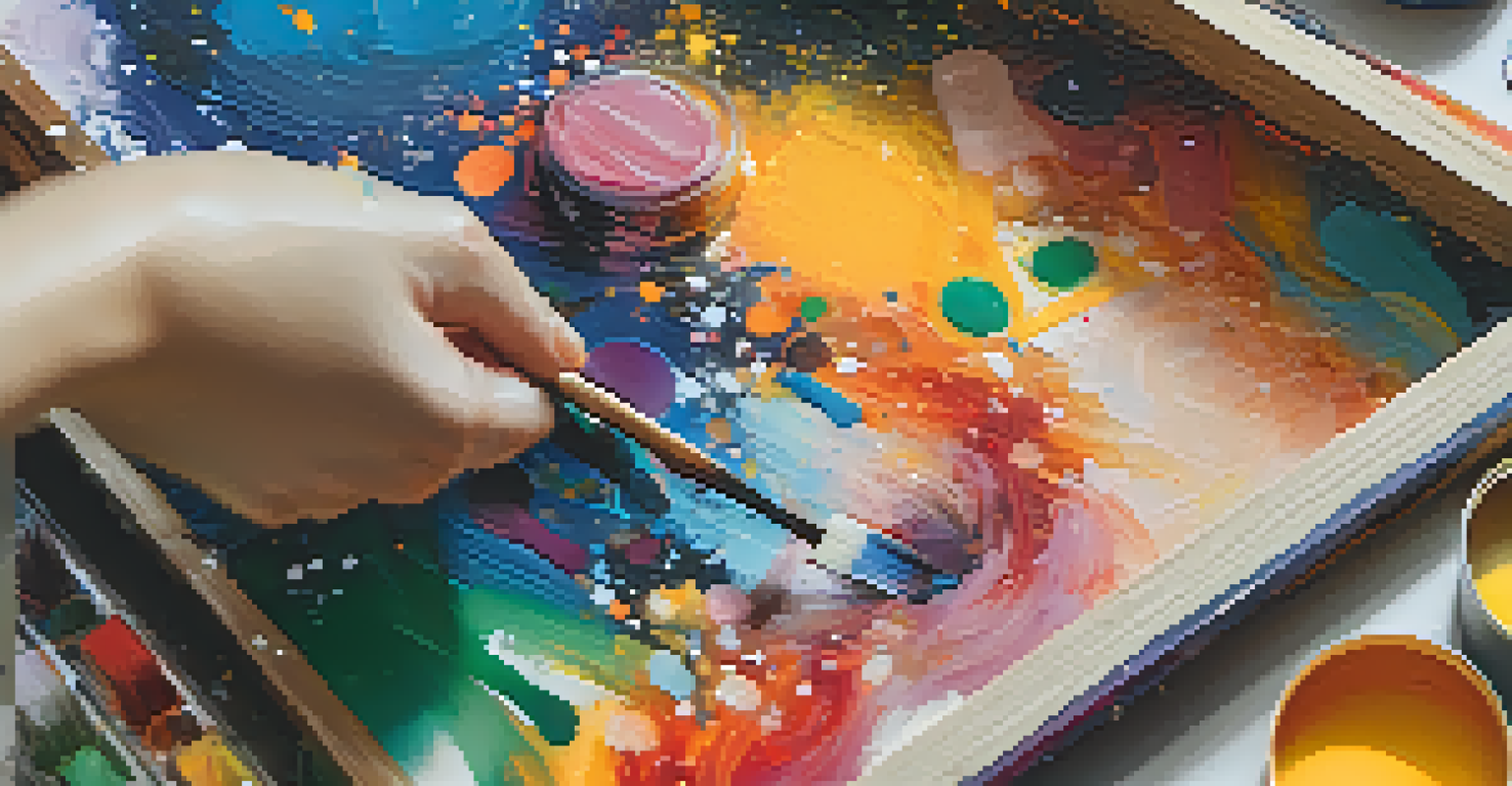Feminism in Art: The Rise of Female Painters

Understanding Feminism's Role in Art History
Feminism has profoundly influenced the art world, challenging traditional narratives that often sidelined female artists. This movement seeks not only to highlight women's contributions but also to critique the male-dominated art establishment. Through various waves of feminism, artists have used their work to address issues of gender, identity, and power dynamics.
I think the best way to describe my work is to say that it's a feminist art that has to do with the world we live in and what it means to be a woman in this world.
In the past, women artists were frequently overlooked or dismissed, despite their immense talent. Feminism has worked to reclaim these voices, celebrating the work of historical figures like Artemisia Gentileschi and more contemporary artists like Yayoi Kusama. This reclamation highlights the importance of recognizing diverse perspectives within art.
As we examine the evolution of feminism in art, it's essential to understand how social, political, and cultural contexts have shaped female artists' experiences. The rise of female painters reflects not just a shift in the art world but also broader societal changes that advocate for equality and representation.
The Emergence of Female Artists in the 20th Century
The 20th century marked a significant turning point for female artists, as they began to assert their presence in the mainstream art scene. Movements like Abstract Expressionism and Feminist Art provided platforms for women to express their unique perspectives. Artists such as Georgia O'Keeffe and Frida Kahlo broke boundaries, using their work to explore themes of identity and femininity.

Despite facing obstacles, these artists paved the way for future generations, proving that female voices are essential in the art narrative. Their contributions, often rooted in personal experience, resonate with audiences and challenge societal norms. The boldness of their work continues to inspire young artists today.
Feminism Reclaims Women's Voices
Feminism has played a crucial role in highlighting and celebrating the contributions of female artists throughout history.
Moreover, the rise of art collectives and feminist galleries in the late 20th century created spaces for women to collaborate and showcase their work. This collective effort not only elevated female artists but also fostered a sense of community and solidarity among women in the art world.
Exploring Themes in Feminist Art
Feminist art often explores themes related to gender, sexuality, and the female experience. Many female painters use their work to confront stereotypes and societal expectations placed upon women. For instance, artists like Judy Chicago create installations that celebrate women's contributions to culture and history, challenging the traditional narratives often found in art.
Feminism is not just about women; it's about all people, and it's about the planet we live on.
These themes resonate deeply with audiences, allowing for a shared understanding of the struggles and triumphs women face. By addressing issues like body image, reproductive rights, and violence against women, female painters engage in crucial conversations that extend beyond the canvas. This connection to real-life experiences makes feminist art both powerful and relatable.
Furthermore, the exploration of domesticity and everyday life in women's art provides a fresh perspective often overlooked in male-dominated narratives. Artists like Mary Cassatt portrayed intimate moments of women’s lives, highlighting the beauty and complexity of their experiences.
The Influence of Intersectionality in Feminist Art
Intersectionality, a term coined by scholar Kimberlé Crenshaw, plays a crucial role in feminist art, acknowledging that women have diverse identities that shape their experiences. This concept encourages artists to explore how race, class, sexuality, and other factors intersect with gender. As a result, contemporary female painters often create works that reflect this multiplicity of identities.
For instance, artists like Kerry James Marshall and Mickalene Thomas incorporate themes of race and culture into their work, challenging the traditional portrayal of black women in art. Their pieces not only celebrate black womanhood but also critique the historical omissions of these narratives. This richness adds depth to the feminist art movement.
Intersectionality Enriches Art
Embracing intersectionality allows contemporary female artists to reflect diverse identities and experiences in their work.
By embracing intersectionality, female artists are able to address broader social issues, making their work relevant to a wider audience. This inclusivity strengthens the movement, as it recognizes the importance of diverse voices and experiences within feminism.
The Role of Social Media in Promoting Female Artists
In today's digital age, social media has become a powerful tool for female artists to showcase their work and connect with audiences. Platforms like Instagram allow artists to share their creations instantly, bypassing traditional gatekeepers in the art world. This democratization of art has enabled many emerging female painters to gain visibility and recognition.
Social media also fosters a sense of community among female artists, allowing them to support one another and collaborate on projects. Hashtags like #WomenInArt and #FeministArt create spaces for discussion and sharing, amplifying their voices. This online presence is crucial in promoting their work to a global audience.
Moreover, social media enables artists to engage in activism, using their platforms to raise awareness about social issues. By sharing their art alongside relevant narratives, female painters can inspire change and foster dialogue, proving that art can be a catalyst for social transformation.
Challenges Faced by Female Painters Today
Despite the progress made, female painters still face numerous challenges in the art world. Gender bias, unequal representation in galleries, and pay disparities continue to hinder their careers. Many women artists find it difficult to secure exhibitions or funding, often competing against a backdrop of entrenched male dominance in the industry.
Additionally, the pressure to conform to traditional gender roles can stifle creativity, as women may feel compelled to produce work that aligns with societal expectations. This challenge can lead to self-censorship, where female artists shy away from exploring bold or controversial themes. It’s essential to address these barriers to ensure a more equitable art landscape.
Social Media Empowers Female Artists
Social media platforms have become essential for female artists to showcase their work, connect with audiences, and foster community.
However, many female artists are actively pushing back against these challenges, advocating for change within the art community. By forming collectives and engaging in activism, they work to create a more inclusive environment that celebrates diverse voices and perspectives.
The Future of Feminism in Art
The future of feminism in art looks promising, with a growing emphasis on diversity and representation. As more female painters gain recognition, the conversation around gender equality in the art world continues to evolve. This shift encourages young artists to pursue their passions, knowing that their voices matter.
Art institutions are also beginning to acknowledge the importance of inclusivity, with initiatives aimed at supporting female artists. Exhibitions dedicated to women's contributions and programs designed to mentor emerging female talent are becoming more common. This support is crucial in fostering the next generation of female painters.

Ultimately, the rise of female painters not only enriches the art world but also inspires wider societal change. As their stories and experiences continue to be shared through their work, the impact of feminism in art will undoubtedly resonate for years to come.